Human Action is not Nature
Science, techniques and technology are now seeking perfection, a dubious and complex unit of language. Humankind striving to obtain perfection has executed overtime flawless techniques and virtues 34. But even if we are in the best of our biological conditions, transhumanists believe that what we had achieved till now as a specie is not good enough. From a transhumanist perspective, perfection has to do with the unified notion of progress looking for enhanced human competence 35. For the rest, the factors that contribute to the perfection of man exceed the decline of his biological vulnerability. Vulnerability should not be considered a bitter expression of our imperfections, but an essential human feature. Perhaps because we are know we are vulnerable, we feel exposed and subjected by our natural finite trait.
The absence of human autonomy is the significance of nature 36 and “technology can be defined as a pursuit of power over nature” 37. Transhumanism urges us to abruptly separate humans from nature, since the philosophy considers that the most effective way to end suffering, is to get rid of the biological substrate that causes it, in which it sees only a burden that prevents all transcendence. Thus, the late modern sentiment that the human subject lacks a future, and adds the resolution that it does not deserve to have it, is preeminent. Therefore, what it presents as a redemption has the appearance of being rather a surrender. All meaning and all ends are placed in the hands of a techno-scientific utopia that relies on an unlimited human plasticity, and discards, without any justification, the possibility of an irreversible break. The activities and actions humans fulfill and accomplish are not nature itself, but they have the capabilities to design and develop it - genuine nature in all its performance, threats for the freedom of choice and unknown outcomes. Towards all our attempts and tests, it is still rarely easy to foretell and shape life around nature’s unpredictability 38.
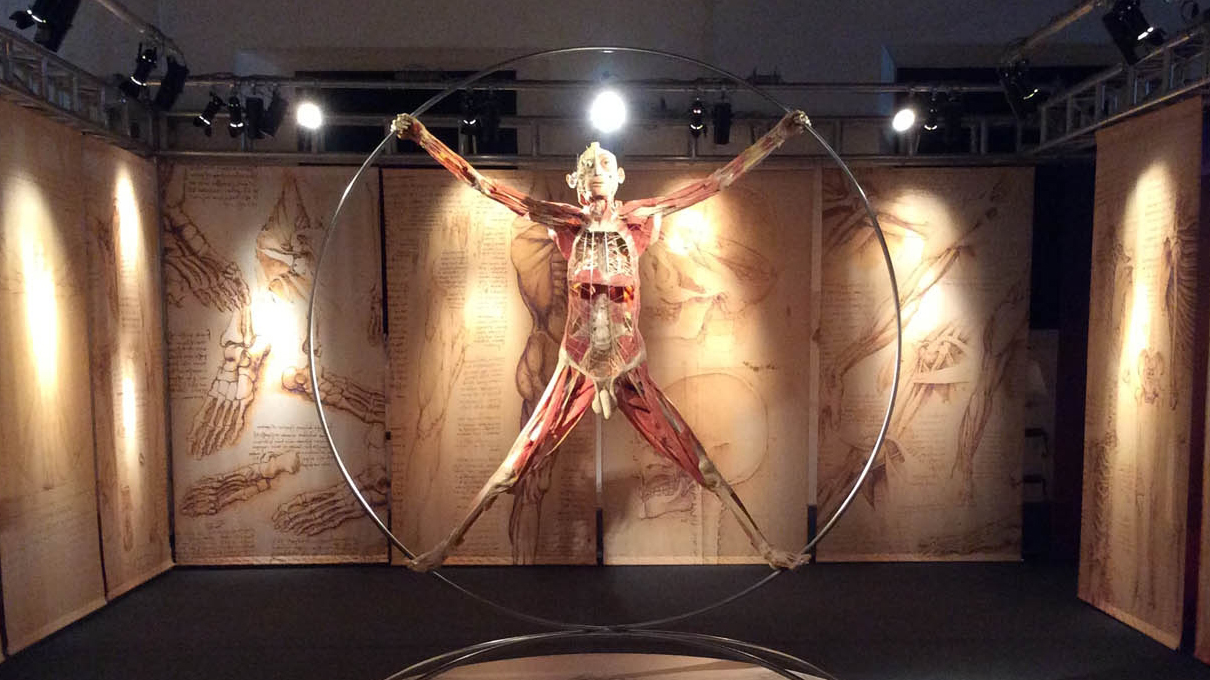
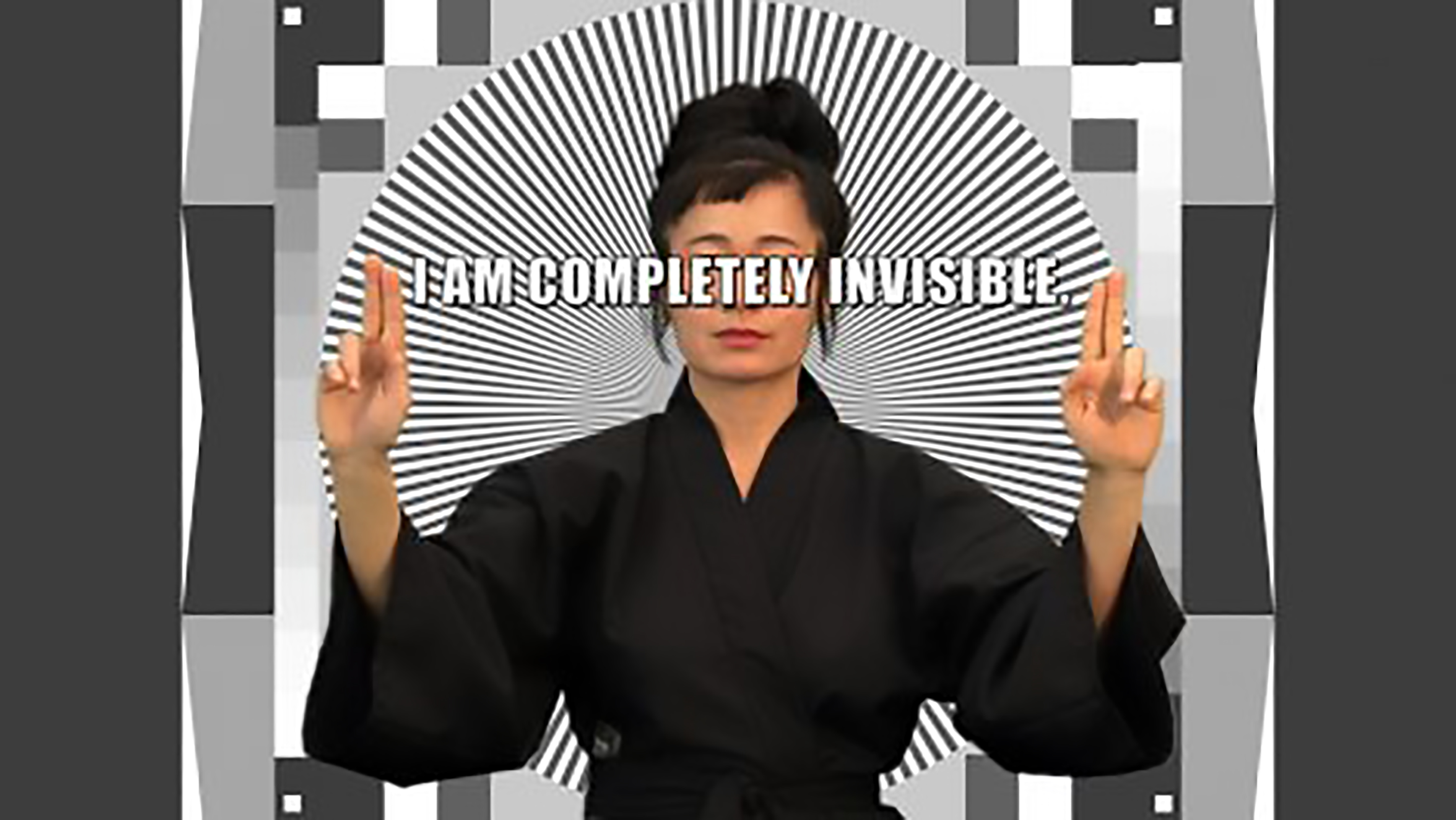
The developments of technical knowledge threw time made possible the investigation of the corners of the corporeal world, from the microcosm to the macrocosm. “Real Bodies, Oltre il Corpo Umano” exhibition is a proof of how, with the right knowledge, is possible to make visible the most hidden parts of the human body. All the corpses and organs have undergone a plastination process in order to keep their shapes and texture almost unaltered and are laid to recall natural moves 39. Specifically the translation of the famous “Vitruvian Man” from Leonardo da Vinci into the plastification of a real anatomical body
The total control of nature 41 that transhumanists believe in is not a true progress, but an vehicle to self-alienation 42; superstition that clashes frontally with the universal beliefs that have been characterized, from the beginning of history, by the recognition of the dignity of each and every man. Transhumanism, although it includes diverse ideological currents and advocates radical social changes, has become one of the recent cultural formulas that best lends itself to the radicalization of capitalism, turning the human being into a bio-artifact subject to the offer and the demand 43. In this accelerated capitalist era that can steadily reinvent itself through the digital, perhaps all human affairs are not solved with technology and social aspects have to be taken into account.
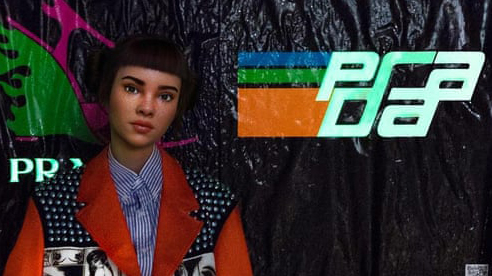

We can take as an example Lil Miquela and Gram Shudu. Both of this Instagram cyborg-influencers question or erase the limits of the physical and the digital. Their posts captivated millions of people who follow them today, to such a degree that their success could be enviable by many who call themselves influencers or public figures (real human beings). Lil Miquela has collaborated with the well-known Prada fashion brand
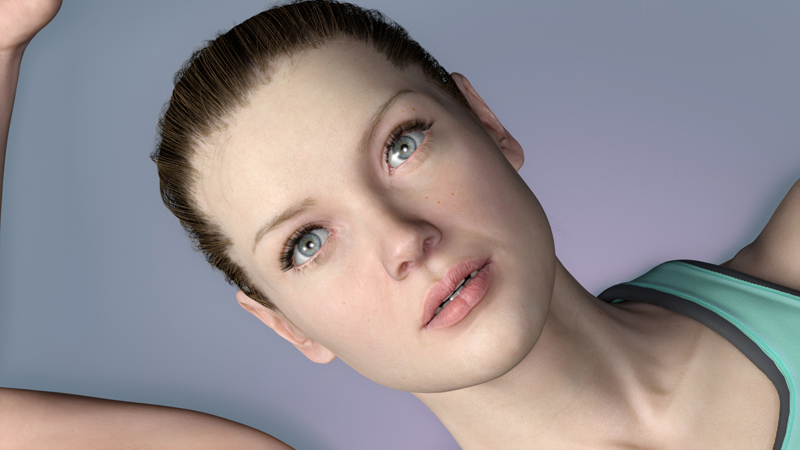
Another example of computer generated bodies in the consumer capitalist sphere is the exhibition ‘Rigged’ by the artist Kate Cooper 47. As technology increasingly vivifies the virtual bodies, Cooper questions traditional points of feminist critiques that became difficult: what and/or whose body is it, and what exactly is being performed (Fig. 13). The image of women is permanently shaping in different ways and she insists that is not about identification but instead about how we take part in these images. Her approach implies a new way of constructivism by criticizing how this is a violence for real woman and using the language of mass advertising and objectification of the female (digital) bodies in a hyper-capitalists world. Her work, as well as Wilson’s creation ‘Shudu’, make us wonder about how models would look like and how designers would be able have total control over their models in the future, imitations of real women. “Beautiful” and “perfect” bodies made by the desires of other human.
Transhumanism most notable defenders are prestigious scientists, designers, coders and engineers. Yet, unless you have a realistic vision of today’s society, science and technology, it is difficult to assume an unwavering confidence that technological development will lead to the resolution of all the evils that have plagued us throughout our existence, including death 48; in which social issues are ultimately solvable technical problems through better techniques, or simply selecting the type of beings suitable for existence; in which total dominion over nature is possible and desirable; and in which general happiness, paradise on earth, is within the reach of our laboratories; a complete emancipation of nature.
Enhancement;
The Emancipation of Nature
It is important to talk about the distinction between the notion of human growth, enhancement and improvement, given that such difference is at the root of the optimistic application of biotechnology on the human race, so that it allows to redesign the human being; as the size of the transhumanist proposals of which I’m talking about depend on this. If the proposals of biotechnological interventions do not imply modifying human nature in a radical way but only using it as make-up, it would diminish the strength of the propositions of the transhumanist philosophy.
Being able to take control of our own evolution makes visible the culmination of the process of artificialization of all nature. Transhumanism can be seen as one the most dangerous philosophies in the world. However, not everything that is promised can reach reality as many of the speculative transhumanist propositions that are announced are difficultly attainable or may never be possible to carry out. It seems that transhumanists understand the complex and diverse capacities of humans the from a concept of nature 49, it is not so much the fact that they also assume that there is a nature of the human being as a complete entity. We must question what is (if there is) a proper duty of the human being as such for transhumanists. Although the answer to this question seems more difficult to answer given that the transhumanists are not concerned about this issue, and therefore do not express themselves explicitly, the concept of human nature that they use appears without needing to be an almost elusive desire.
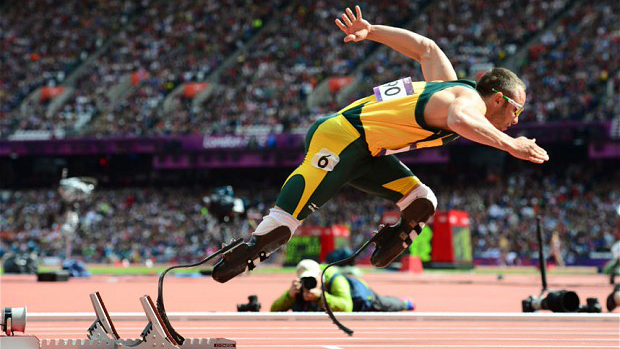
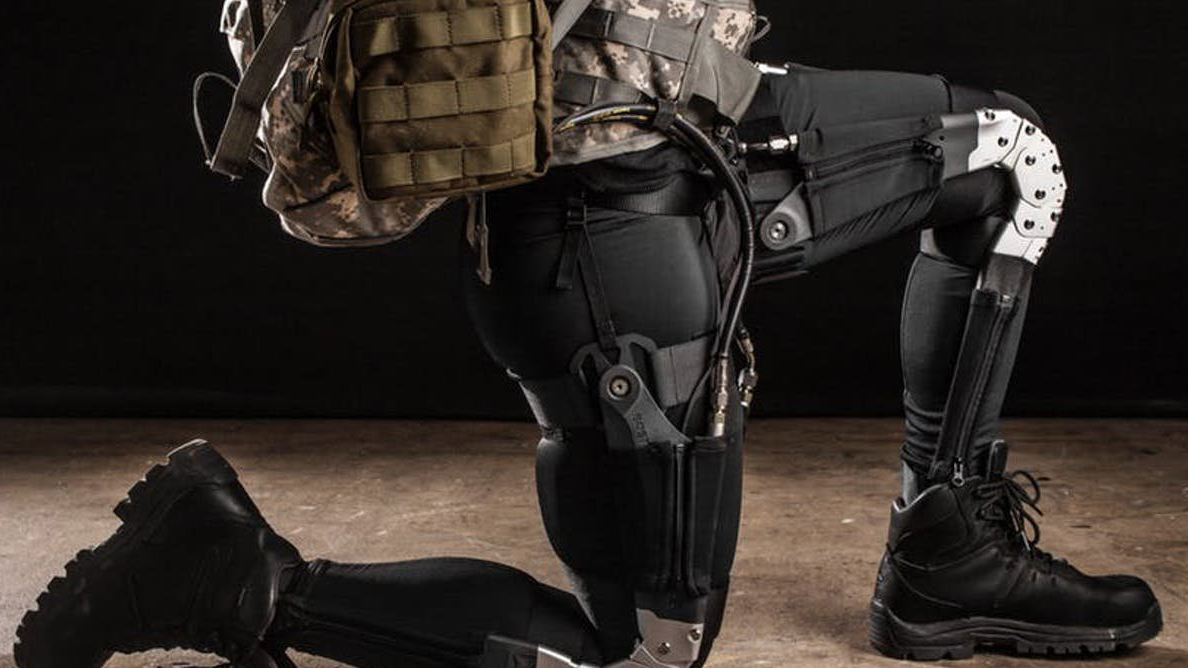
Talking about transhumanist enhancements we can take the differentiation of usage of civil prosthetics and the once that are designed for military purposes. As a civil usage of transhumanist technologies we can take as an example the Oscar Pistorius
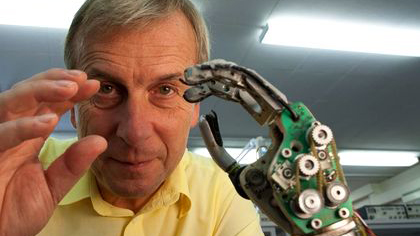

Self-experimentation with transhumanist technologies, as well, is something that happens. As examples of enhanced humans (or cyborgs) we can talk about in first place about Kevin Warwick 54, world leader in the research of artificial intelligence. He implanted an RFID chip in his forearm, a radiofrequency identifier such as the ones put on clothes of any store. This eventuality made Warwick became the first cyborg in history in 1998. His intention was not to become one, but to get rid of hideous events. His second cyborg experiment was to articulate the arm of a robot. That metallic arm imitated his own movements, guided by the stimuli of his brain
Today’s generation does not distinguish between implants, transhumanism or cyborgs, because they are the last living this transition in this language, one that addresses less the signifier and more the meaning. And perhaps it is also the generation that marks the change between what can be done and what they will want to do, adapt or dress in their own body. One that tacitly adopts a transformation that began, either by necessity or desire, thousands of years ago.
According to the transhumanist movement, and stated by who happens to be Google’s Engineering Director since 2012, Ray Kurzweil 56, the singularity is an event that will happen within a few years with the spectacular increase in technological progress, and due to the development of Artificial Intelligence and the convergence of NBIC technologies (nanotechnology, biotechnology, information technology, and cognitive science) 57. This concept would cause social, cultural, political and economic changes unimaginable, impossible to understand or predict by any human prior to the aforementioned event. In this phase of evolution, transhumanist predict that the fusion between technology and human intelligence will take place, giving rise to an era in which the non-biological intelligence of the posthumans will be imposed.
Throughout this process, transhumanism wants to spread an ideology and a culture favorable to human enhancement through the adoption of some artificial improvements in the human being (genetic, organic, technological) with the objective declared to make it smarter, more long-lived, more perfect, happier, even so that it can reach cybernetic immortality and the conquest of the universe. However, this worldview can involve risks. Are we prepared as a humanity for such radical change or do we think that we must conserve our genetic heritage and remain normal human persons, with our limitations and failitis, while preserving our inalienable freedom and dignity?
There are notions that may seem vague or used with certain licenses, but in this case we could say that the improvement is flat, while the growth is fertile. That sort of residue left by the habitual activity, which makes the humans more capable of acting, of loving more, of being more admired, of being more interested, and its correlate: that makes someone more capable of lying better, of deceiving, of to get away with it or to devise how to do more damage, they seem to have nothing to do only with improving skills or losing them, but with something more package: growth and closure. The improvement is determined both in its object and in the way it is acquired and it seems that human growth is much more than the measurable improvement in certain delimited aspects. In this, transhumanism loses sight of temporality and converts timing into the human condition. Only with a complete naturalization of man 58 can the human condition be made of the timing. By completely naturalizing the human being 59, an attempt is made to prolong, through the extension of human capacities, an existence that will be precarious anyway. It is about infinitely delaying the status of timing, which always has expiration. Therefore, in the end, the position should not be satisfied with a certain improvement, but betting on eternity through the elimination of death. Thus, from the ethical growth the improvement of physical capacities is resized, it is given a frame and a sense and it does not become an end in itself; and vice versa: from the physical improvement in intellectual or performance terms, it could subscribe to a healthier life, but not necessarily more complete or more human, only from the physical improvement.
By playing with anti aging and immortality dreams, transhumanist are playing a race with time. In an interview Natasha Vita-More spoke about the’ Whole Body Prosthetic’ 60 theory project. Defending the ideal of being able to change our whole body with a prosthesis, Vita-More said that our cells possess a determined lifespan and by using nanotechnology and bioengineering methodologies we will be able to edit this with new technologies. She professed that if there are already theories about backing up our brains, why not to back up our own body? The ‘Whole Body Prosthetic’ theory states if we do have a different type of body such a cyborgs or another autonomous artificial bodies, “then we could feasibly upload our brains our backup our brains into a computational system and also downloaded into a physical material body so here we’re looking at real time physical material time and also nonlinear time which would be artificial cybernetic or a synthetic virtual agents in different environments so it’s to secure life personhood over time. You can think that that kind of embodiment physical embodiment and and or we are perhaps physically embodied intelligence is kind of crucial to our experience and to the way we perceive and engage the world. I do I think that our embodiment is crucial to our awareness, our perceptions, our state of consciousness or mind and our cognitive decisions, our intellection. So imagine that if we exist in an upload state, say in a singularity of upload state, and we want to exist in the biosphere how would we do it if we didn’t have a body, now why on earth would we want a biological body at that point? We would want an avatar body a Whole Body Prosthetic system that is more functional, more flexible, more durable, and more sustainable than the biological body that we could use as a vehicle in the biosphere. So we’re looking at two different spheres, the biosphere the reality that we live in now with chronological time or linear time and the cyber sphere which would be nonlinear time exponential time and we would have multiple different types of existences there based on what type of environments”. According to this discourse, it seems that if transhumanist are able to transfer their brains and bodies senses in a majority of it’s capacities to machines, they are aiming to use technology to be time travelers. I wonder if transhumanist technologies in the future perhaps will be able to evade temporality, in the sense that it could allow humans to have the ability to bend or distort time so that they perceive it very differently as normally as they do today.
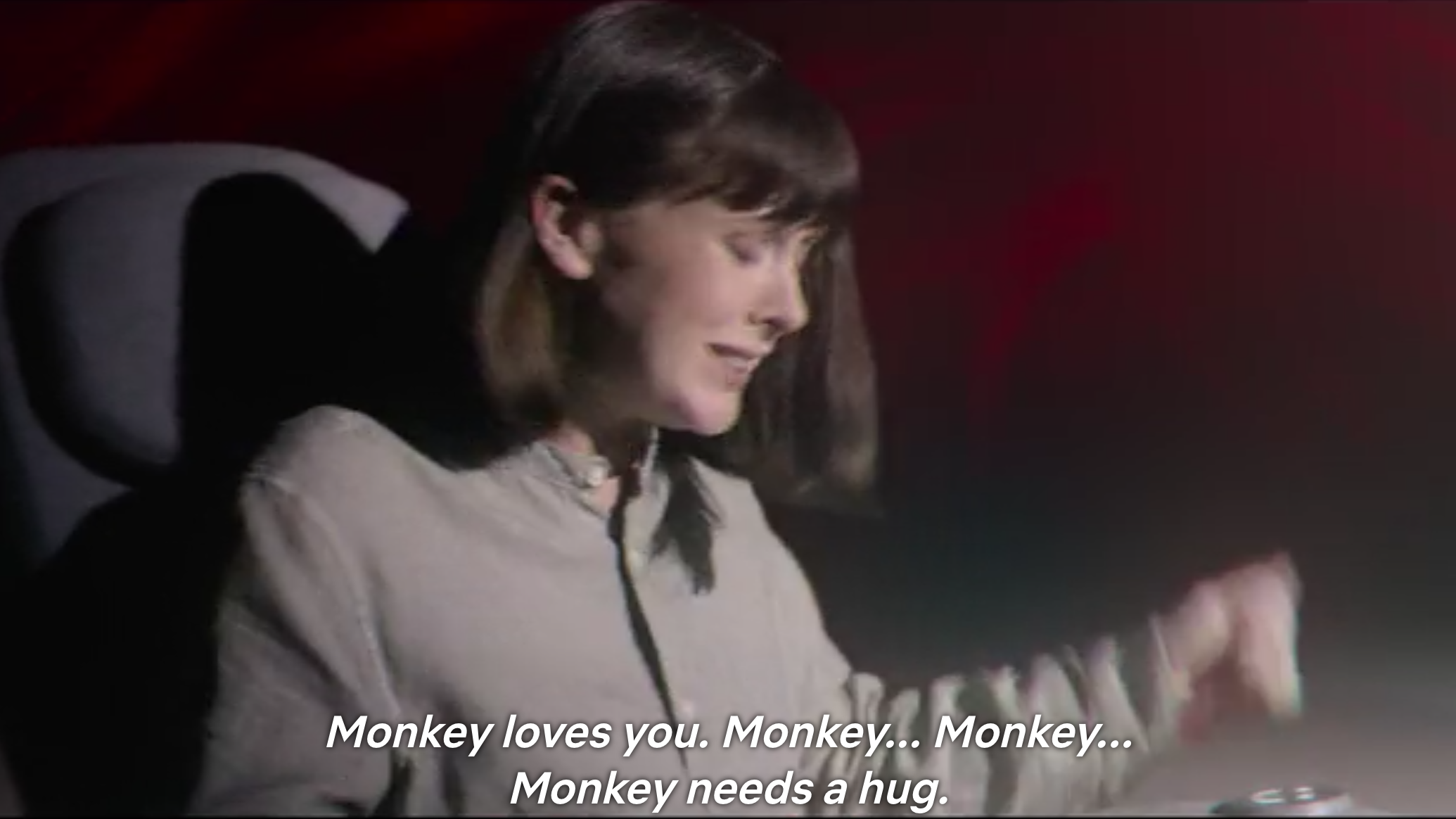
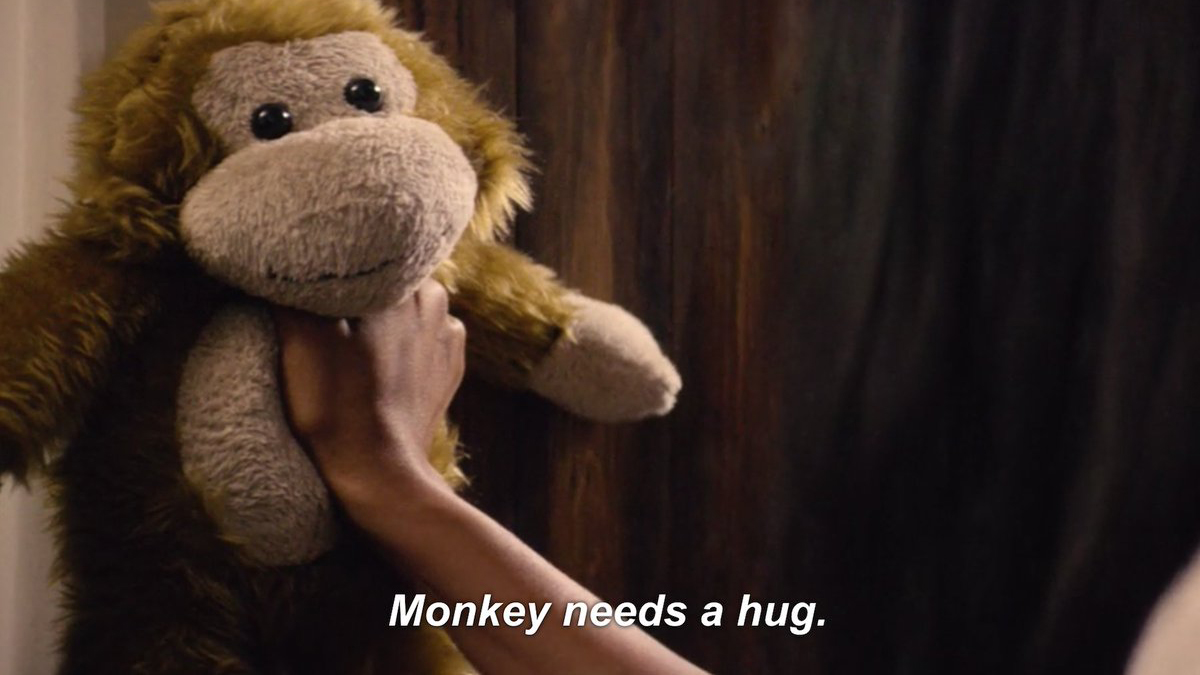
The episode ‘Black Museum’ from the series ‘Black Mirror’ 61 exhibits a fictional scenario in which, given the chance, human cognitive capacities can be controlled by technology. The episode narrates the story of Carrie, a mother who had an accident and stayed in a coma. Carrie’s mind, after her death, was uploaded firstly into her husband’s brain so she could see her young son grow up, till he couldn’t endure the situation anymore. Then he transferred Carrie’s mind into a Monkey, a child friendly toy being able to perform just two thing: say “Monkey loves you” (meaning she was having a positive reaction) and “Monkey wants a hug” (when her thoughts were negative)
Carrie’s case has to do with the way transhumanists think of human as a kind of disembodied conscience or mind. Although this does not remove the fact that they are materialistic, because they conceive consciousness as something that springs from the simple structure that supports it. Therefore, to the extent that the structure can be replicated, the same consciousness or mind can be reincarnated in other hardware 62. If human nature is a disembodied mind, any improvement of the hardware that supports it will be welcome, insofar as it does not affect its rational and moral qualities. The rational and moral characteristics will be considered improved in as much as the mind as a whole or each of its faculties improves its own function. The ideology that underpins transhumanist projects can only be echoed among believers in the dogma of one-dimensional materialist technical progress, not among those who believe in authentic, multidimensional, ethical and spiritual human development. The materialist premises of transhumanism vitiate a large part of its proposals. For the materialist, deep down there is no essential difference between the human being and the irrational living beings, and neither between these and the inanimate beings. Ultimately, from this initial error comes the negation of free will in man and the confusion between human intelligence and the Artificial Intelligence of computers or robots. Stated clearly and simply: it is not possible to upload my mind or body to a computer. A computer program that would simulate my way of thinking, speaking, moving and acting, it would be a “copy” of my mind or body; but still, it would never be me. It is completely absurd to seek immortality in this way.